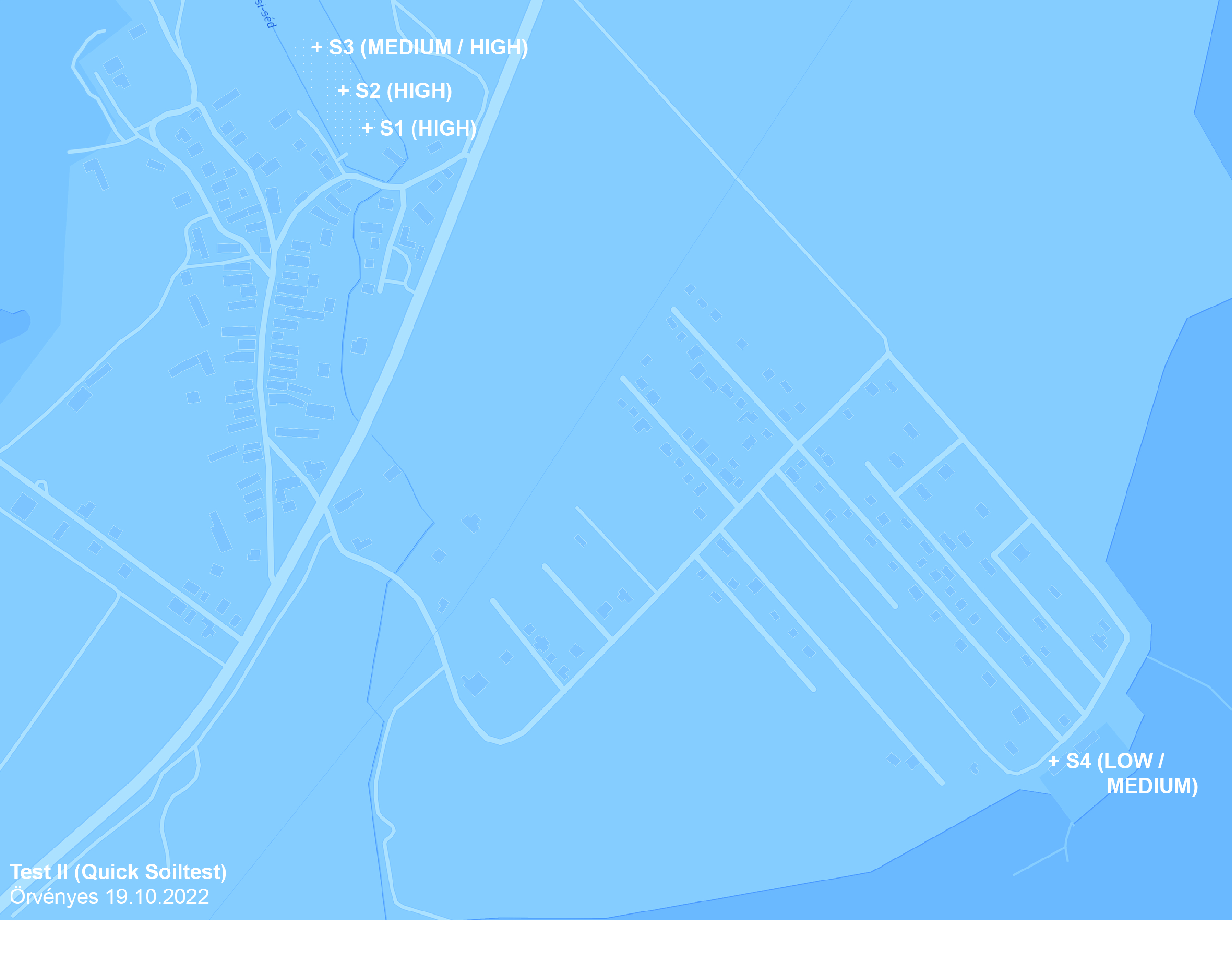SOIL TESTING
Phosphorus is Classic Blue.*
Phosphorus testing is a process of making P visible in water and soil. Its presence is signaled by a deep blue color tone.
Most growers only interact with phosphorus when they sprinkle it on fields, harvest the crop, and bathe in polluted waters.
Regular soil testing should be part of all cultivating practices.



Testing version 1 (Laboratory method - Total Phosphorus in water)
- Collect soil sample
- Dry soil at 60° Celsius for 24 hours
- Grind the dry soil to a fine powder
- Measure 200 mg
- Dissolve in 30 ml distilled water
- Measure 0.5 ml and dilute in 49.5 ml distilled water
- 3 parallel samples with each 10ml
- Add 2ml potassium persulfate
- Cook for 1hour in autoclave on 121°C at 2bar and wait for cooling
- Add 960 microliter P-reagent (sulfuric acid, potassium antimonyl tartrate, ammonium molybdate)
- Add 240 microliter ascorbic acid 5,4 % solution
- Wait 15-20 min, turn to blue
- Measure with photospectrometer the light absorbance and compare with the calibration samples.
Testing Version 2 (Quick Soiltest)
- Collect soil sample
- Mix soil with distilled water in 1:5 ratio
- Wait until soil settles and water gets clean
- Measure 25 ml water
- Add P-reagent (Potassium disulfate)
- Shake it till it turns blue
- Compare sample color to the chart and identify the result (Trace / Low / Medium / High)


*“We are living in a time that requires trust and faith. It is this kind of constancy and confidence that is expressed by Pantone 19-4052 Classic Blue, a solid and dependable blue hue we can always rely on. Imbued with a deep resonance, Classical Blue provides an anchoring foundation. A boundless blue evocative of the vast and infinite evening sky, Classic Blue encourages us to look beyond the obvious to expand our thinking; challenging us to think more deeply, increase our perspective and open the flow of communication.”
Leatrice Eiseman (Executive Director of the Pantone Color Institute)